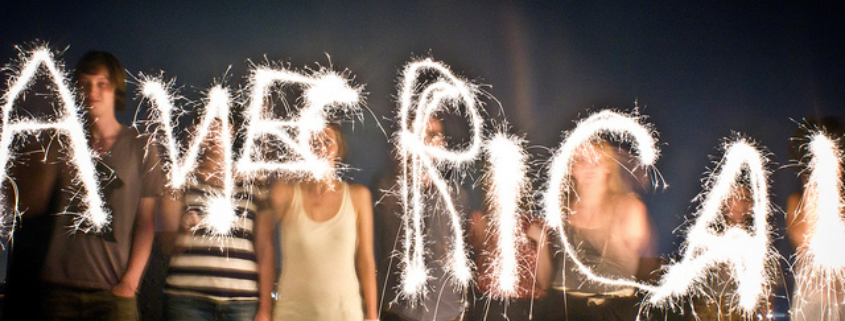Artists in a Divided America
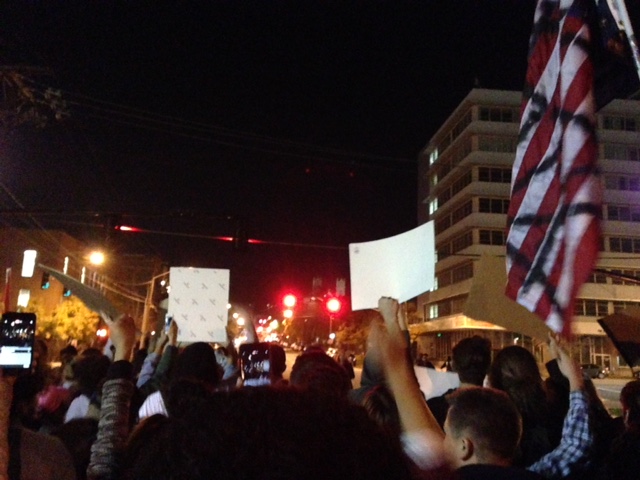
It’s Thursday, November 10th and I’m in downtown Salt Lake City listening to women, queer, American Indian, black, and Latino folks speak on State Street. It’s seven o’clock and completely dark and the city lights twinkle around me and my wife. We’re here for one reason: On Tuesday night, Donald Trump was elected President of the United States. I imagine most of us here are gathered, regardless of the specifics, to show our distaste for the election of such a candidate and what he represents to us. The vitriol on both sides has kept me awake at night, drinking heavily, wondering where we go now.
Generally, it is the role of the artist to disrupt the status quo. What does the artist do when the status quo is disrupted to the point of collapse?
The feeling I had when Trump was elected reminded me of a day in elementary school when, while riding the bus to school, I was punched directly in the stomach by an older kid. It sucked the air right out of me. My eyes felt like they were going to explode; my lungs worked desperately to suck a sliver of air back in.
The results of the election surprised me, but were not completely shocking. The fact that so many Americans were surprised reveals the separate bubbles in which we all reside. I understand the right’s dissatisfaction with Washington insiders and the desire to revamp the entire system. Some on the left felt the same. Many of Trump’s supporters reminded me of people from my hometown in rural western Colorado, voters recently profiled by John Cassidy in The New Yorker. White, working class people were hit hard in 2008. They’re frustrated with government regulations and the status quo of Washington politicians, who they see as corrupt and uninterested in their plight. I think the election of Donald Trump is an absolute rejection of the teachings of Jesus, but a lot of other Christians I know voted for Trump purely on his pro-life stance and defense of “traditional Christian values.” Some disillusioned voters were hoodwinked into thinking Trump represented their struggle, when in reality I think Donald Trump is more like Tom Cruise—an empty vessel, a celebrity through whom our fears and thirst for explosions are vicariously lived.
Not all Donald Trump supporters are racist, misogynistic, or bigoted themselves, but are people frustrated enough to elect someone who is. Documentary filmmaker Michael Moore was one of the people on the left to predict Trump’s ascent. Moore explained why in a now-viral Facebook post, called “Morning After To-Do List.” He wrote, “YEARS of being neglected by both parties, the anger and the need for revenge against the system only grew. Along came a TV star they liked whose plan was to destroy both parties and tell them all ‘You’re fired!’ Trump’s victory is no surprise. He was never a joke. Treating him as one only strengthened him.”
Though white working class disaffection is undoubtedly based in ignorance and privilege, if we want to reach a position of unity and understanding on what just happened in America, it means at least approaching some Trump supporters and their positions with empathy. One must understand why people voted for Trump to come up with a game plan on how to defeat him.
This is my own personal plea for white working class folks on the right who voted for Trump: to stop and consider that the hardships they feel they’ve faced for the last couple of decades have been faced for much longer by black, Latino, Asian, and LGBTQ communities.
I fear what may be lost in this election is regard for people—people who elected Donald Trump and, more importantly, people upon whom Donald Trump stands to inflict tremendous harm. I’m not sure that we can see or hear each other anymore. In an age of partisanship, misinformation, compromised politicians, 24-hour news hype, and fear, how are we supposed to keep living with each other in relative peace? How are we to keep from devolving into cycles of hate, contentious dialogue, and acts of violence? Is this just the unfortunate fall out of Democracy? Or the growing pains of a country? Two-steps-forward, one-step-back?
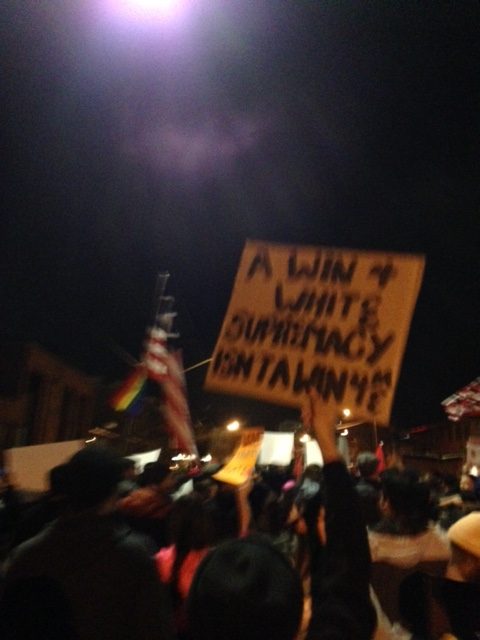
We’ve known America is incredibly divided for some time. You can look at the experience of rural versus urban populations, or this video of Megyn Kelly versus Newt Gingrich and the subsequent commentary. These are just a few examples of the alternate versions of reality that we live in. Everyone now lives in their own echo chamber.
The divide is so deep and hurtful I don’t know that many of us can “heal” and “come together.” People on the right don’t understand the existential fear felt by many, which has been stoked by the President Elect. People on the left don’t understand the deep disaffection of voters who voted for Trump. I wonder if we’re not better off splitting the country in half.
Michael Moore said a vote for Trump was the biggest Fuck You! to the government or establishment we’ve seen in along time. And perhaps this is because the people who voted for Trump will largely not be affected by Trump’s policies. (I, as a white male, may not be.) Much remains to be seen, but it’s highly unlikely that working class whites will benefit from Trump’s proposed policies. And others will suffer. Countless others.
So how do we talk about the issues facing our country with subtlety and nuance rather than with rhetoric and polarized points? How do we truly hear the “other”? Delve into rage, anger, empathy, and ideology?
I really don’t know. But I’m working on it.
Americans consume different cultural media—from articles and songs to podcasts and news sources. Big budget superhero movies might be the only thing we have in common. How do we talk when we don’t even have a common means of communication?
And so I come back to the question I’ve been asking myself lately: What is the role of the artist in a Donald Trump presidency?
There’s part of me that wants to march in protest and rage war on the probable fascist we’ve just elected. Yet I’m also wondering if, in this case, the role of the artist today isn’t so much to disrupt as to open means of communication, to talk. What people who voted for Trump need to see is that Muslim does not mean terrorist, that women are valuable, that black lives matter. What do I, someone who didn’t vote for him, need to see?
At the very least, artists, or humans in general, must awaken those around us to notions of empathy, understanding, and awareness. We must resist oppression on all levels, stand up for those who are vulnerable, defend equal rights and free speech for all. We need an activism that is strong and resolute, but also empathetic, lest we devolve into the same shit-throwing storm everyone else (including me) has been engaged in for the last eighteen months.
Because I wonder, as I write this, if we can see them anymore. The people around us. Or if all we can see are their ideologies and social media posts.
What is the role of the artist today? What is the role of the American human in the year 2017? To disrupt? To mend? To incite revolution or peace?
* * *
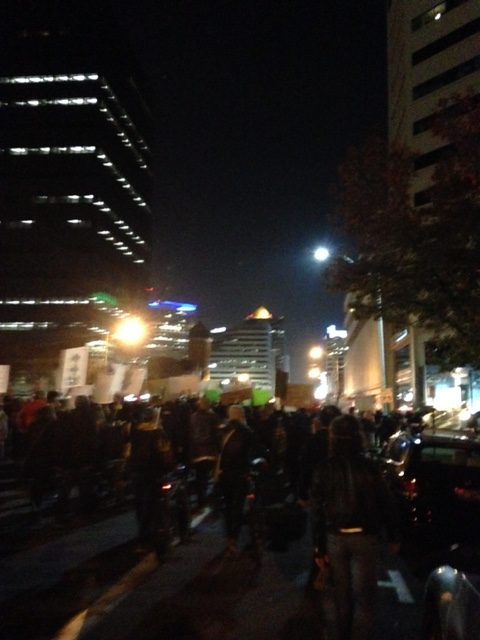
After the speakers are finished, we march down State Street, occupying both lanes. I walk silently next to people holding signs protesting Trump, misogyny, racism, and Islamophobia. The messages are mixed, but the will to organize is strong.
Are we making a difference? I don’t know. I hope so.
After the march, I go home and do what I know how to do, which feels futile and insignificant, but it’s the only thing I know: write.
Seven or eight years after that day in elementary school, that same kid apologized to me. He said he really had no idea why he punched me. I had assumed that he did it for his own amusement. As if the whole thing was a joke. Perhaps he was lashing out from a turbulent home life or some primal desire to exercise power over another human being.
Still, to this day I think about that. How you can punch someone in the stomach and have no idea why you’re doing it. Eventually, though, slowly, the air starts to come back in.
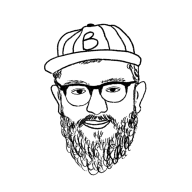
Levi Rogers is a writer and coffee roaster out of Salt Lake City, UT. He lives with his wife Cat, his dog Amelie, and his many socks, all of which have holes. He’s currently an MFA candidate at Antioch University Los Angeles.

